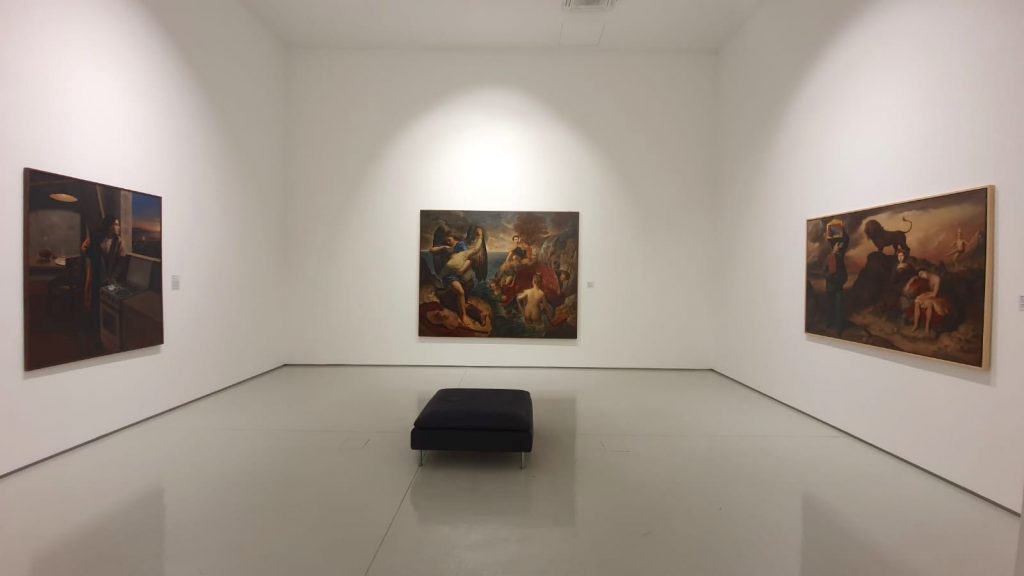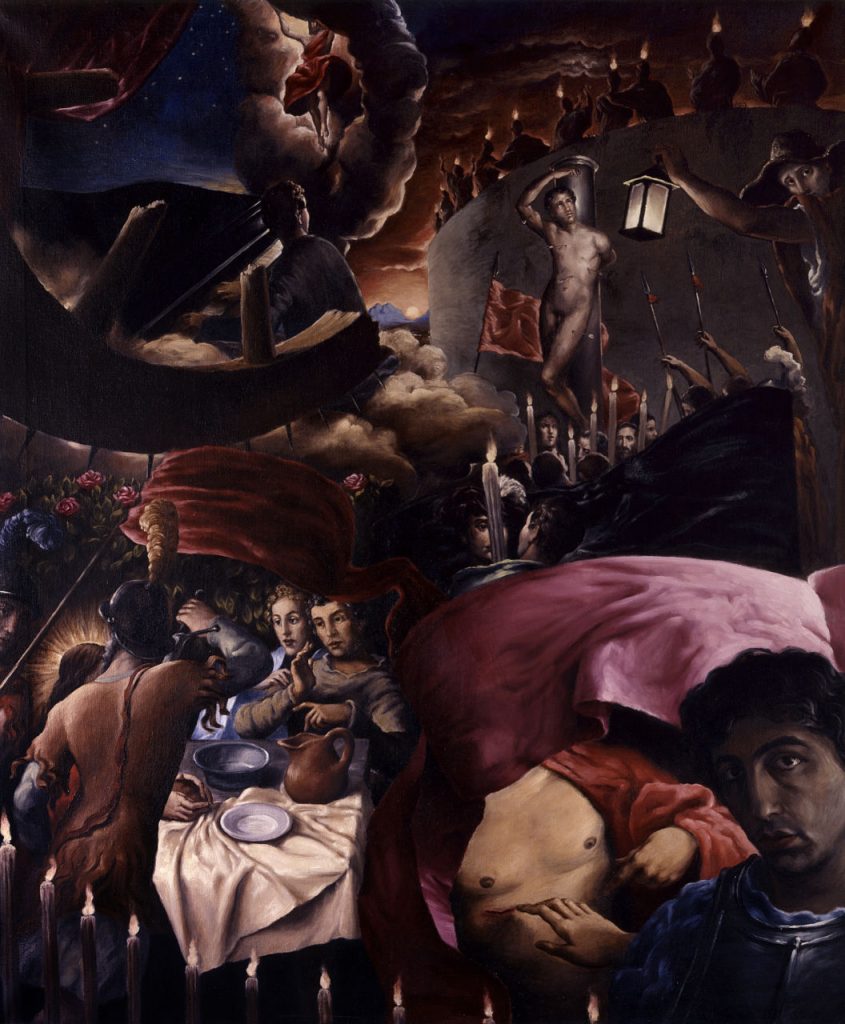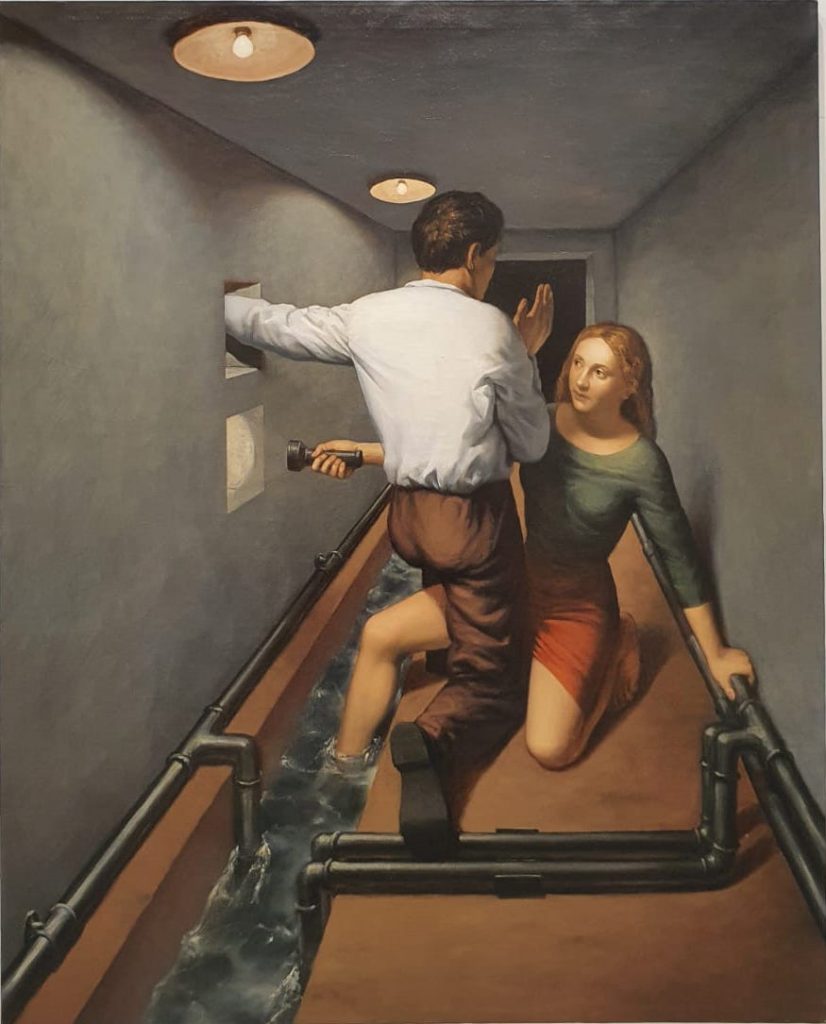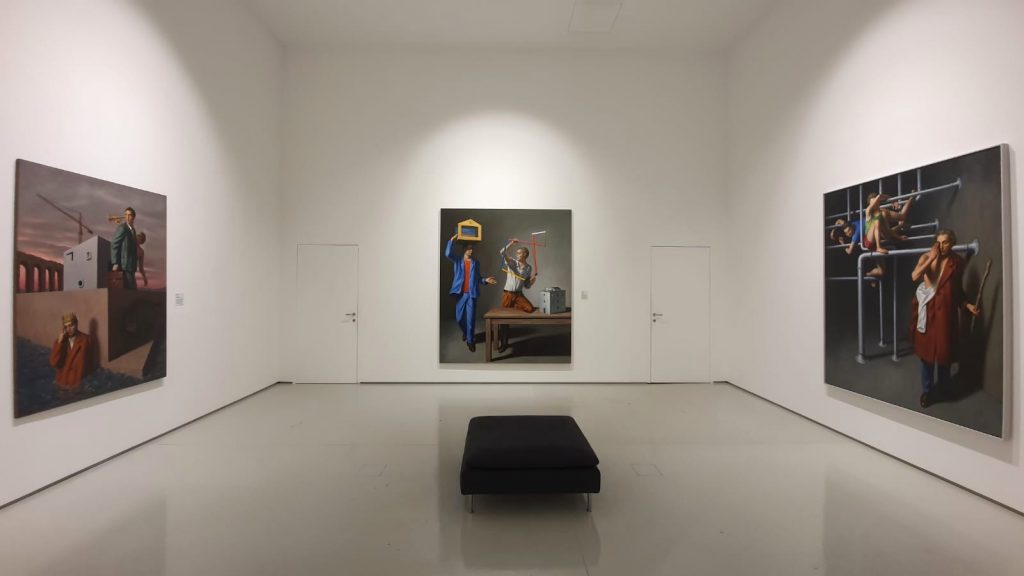Exhibition Review: Stefano Di Stasio, A moment in eternity.
A Moment in Eternity is a retrospective exhibition of Italian painter Stefano Di Stasio, currently on display at Turin’s Ettore Fico Museum. Upon entering, curator Andrea Busto warns visitors that whilst we may be tempted to forensically decode each and every symbol in Di Stasio’s work separately as though it were possible to uncover an inherent truth that lay behind the image, this is futile. The symbols and allegories are so abundant they generate a cacophony of contradictions that refuse a coherent reading. Like a hall of mirrors, each painting is reflected in another, and yet rather than helping us on our quest to decipher the first image’s meaning, it sends us even further away, setting up a red herring. Like Borges’ labyrinth, Di Stasio’s work has one entrance through which to enter and yet has multiple ways that we can exit through. As one walks through the vast, white laminated rooms of what was once an old abandoned factory in which the Museo Ettore Fico now resides, filled with the large canvases of Di Stasio, one experiences what it is to inhabit the surrealistic spaces and Chirico-esque architectures of the imagination that are conjured in the canvases of the artist.

In Specters of Marx, the French philosopher Jacques Derrida borrows a phrase from Shakespeare’s Hamlet to sum up the postmodern condition: “time is out of joint”. According to Derrida’s notion of hauntology, ghosts – or rather social and cultural phenomena – from the past continue to stalk our present era. As such, time is distorted; the past flows freely into the future, and there is no distinction between what is past, what is and what will be. Similarly to Derrida’s notion of hauntology, Di Stasio’s canvases fracture all traditional conceptions of temporality. His canvases unite stylistic references spanning the entirety of Western art history within one frame. We see Christ, the Saints, references to Raphael, and a strong current of Surrealism that tends towards the uncanny. It is fitting, thus, that art historian Maurizio Calvesi referred to the artist’s work as “anachronistic”.

Autoritratto dopo Cristo (1980), an early work found in the first part of the exhibition, is painted with all the drama, grandeur and sensationalism found in Baroque painting. Various religious motifs appear to us through the billowing clouds as a procession of torch-bearing men snake through the canvas solemnly. As in most of Di Stasio’s paintings, this is a self-portrait. Unconventionally, however, the painter depicts himself from multiple perspectives. On the bottom right of the canvas, Di Stasio is the apostle Thomas who refused to believe Jesus’ resurrection until he was able to touch his wounds. To the left, the final supper is shown, but not as we know it. The stability of the scene has been altered; it is one of violence and agitation. A soldier with his sword drawn, inverted inwards, eclipses Christ so we cannot see him. Above appears the artist as Saint Sebastian; at his side is Diegones, the cynic philosopher, a representation of the will to knowledge. Above, Christ ascends into the folds of a starlit sky as the artist plays the piano. With every recollection of saintly sacrifice, the artist stumbles into the story to find himself there.

As the exhibition progresses, Di Stasio’s canvases draw away from such overt references to Christianity, shifting more definitely towards the language of Surrealism. Dialogo Sotterraneo (1991) is a highly erotic composition. A man and a woman kneel on the floor of a deserted, confined space; their limbs entangled. The female figure has been taken directly from one of Raphael’s canvases, yet her skirt has been hitched up, revealing her muscular legs; her foot is immersed in a stream of water that runs down the left side of the painting. The figures inhabit the austere architecture of a Di Chirico canvas. The vanishing point is a black square that frames the artist’s hand; it is held above the woman’s head as though he were in the act of blessing her as she instead grasps onto one of the many water pipes permeating the room. On the other side, there are two squares that open into the wall’s surface. The artist figure has one arm penetrating the darkened passageway above, whilst the female figure holds a torch to the lower crevice so that it becomes illuminated. The frame juxtaposes the blind faith of a believer with enlightenment and intellectual rationalism, crossed through with eroticism.

They are heavy themes; religion/enlightenment, belief/cynicism; darkness/light; and Di Stasio attempts to carry the weight of Western art history on his shoulders. It is certainly no mean feat. His fusing of eras and epochs suggests to the viewer that such fundamental questions are timeless; they have troubled men and women throughout history and will continue to do so.
The exhibition A moment in eternity is on from 29 September to 11 December 2021 at Museo Ettore Fico, Via Francesco Cigna, 114, 10155 Torino TO, Italy. Visit the website for more information.
Contact us if you are interested in the work of Stefano Di Stasio.